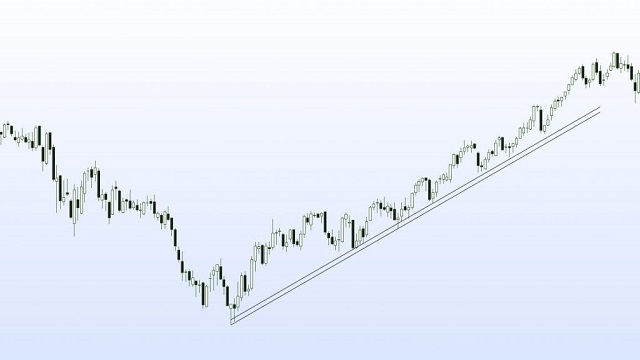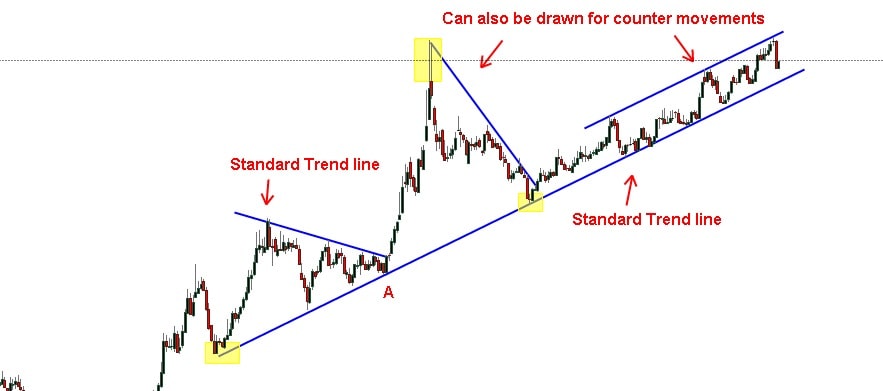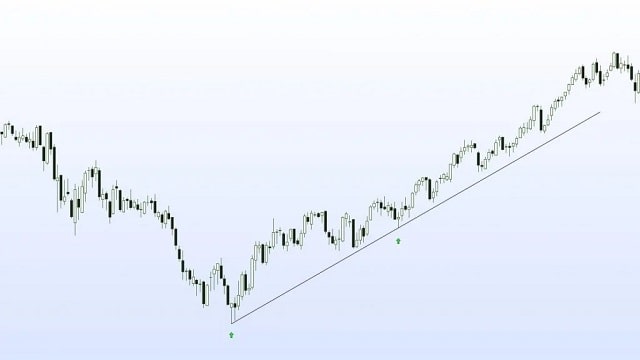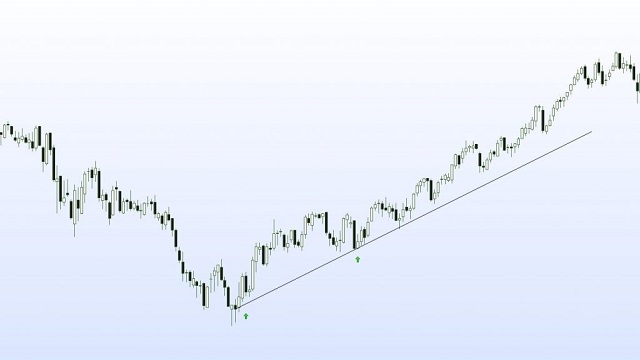A trend line is a straight line that marks the trend of an asset. It can be bullish or bearish. In an uptrend line, the straight line connects the successive relevant lows. A downtrend line, on the other hand, is a straight line that connects the successive relevant highs.
In a lateral trend or range, there are trend lines both at the top and at the bottom, however they are called resistances and supports, respectively.
It is a basic and fundamental tool for technical analysis. For many traders, it is a fundamental part of their operations.
How to draw a trend line correctly?
First of all, there is no single way to draw trend lines. As part of technical analysis, it involves a certain amount of subjectivity. Subjectivity in the sense of experience. That is, each analyst will decide how to draw a trend line based on their personal experience.
There are analysts who draw trend lines by joining the highs and lows of each candle. Just as there are analysts who draw trend lines by joining the closes of candles. There are even those who draw a double-trend line. In this way, they establish zones.
In any case, we must always keep in mind that to build a trend line, two points (at least) are needed. These points can be two lows or two highs. Of course, the more points that join a trend line, the stronger it will be.
-
Trend line joining lows
-
Trend lines joining closes
-
Trend line by zones

Types of trend lines
We can also classify trend lines between external and internal. All of the above are external trend lines since they run along the outside of the quote. Internal trend lines are those that cross the quote. That is, those that run inside it.
Regarding the layout, it is important to mention that technical analysis evolves and the use of its tools is updated. The most important thing in this type of analysis is, without a doubt, the experience of the analyst.
Trend lines in trading
Many traders use them as buy and sell signals as support or resistance. In other words, to form a trend line, two lows or two highs are needed. That is, two points that project a straight line. In an uptrend, when the price touches the trend line again, it could be considered a long signal. On the contrary, in a downtrend, when the price touches the downtrend line again, it could be considered a short signal.
Another use, as its name suggests, is to establish whether a market is trending or not. However, this use is not entirely correct. From a theoretical point of view, a trend is made up of increasing highs and lows (uptrend) or decreasing highs and lows (downtrend). Thus, until a trend loses the reference low or high, it is not considered finished. Technical analysis owes this contribution to Dow’s theory. In any case, each trader must establish what works best for him based on his own experience.
In any case, to use trend lines in trading, it is necessary to establish clear and concise rules. So that they form part of a tested trading system.



